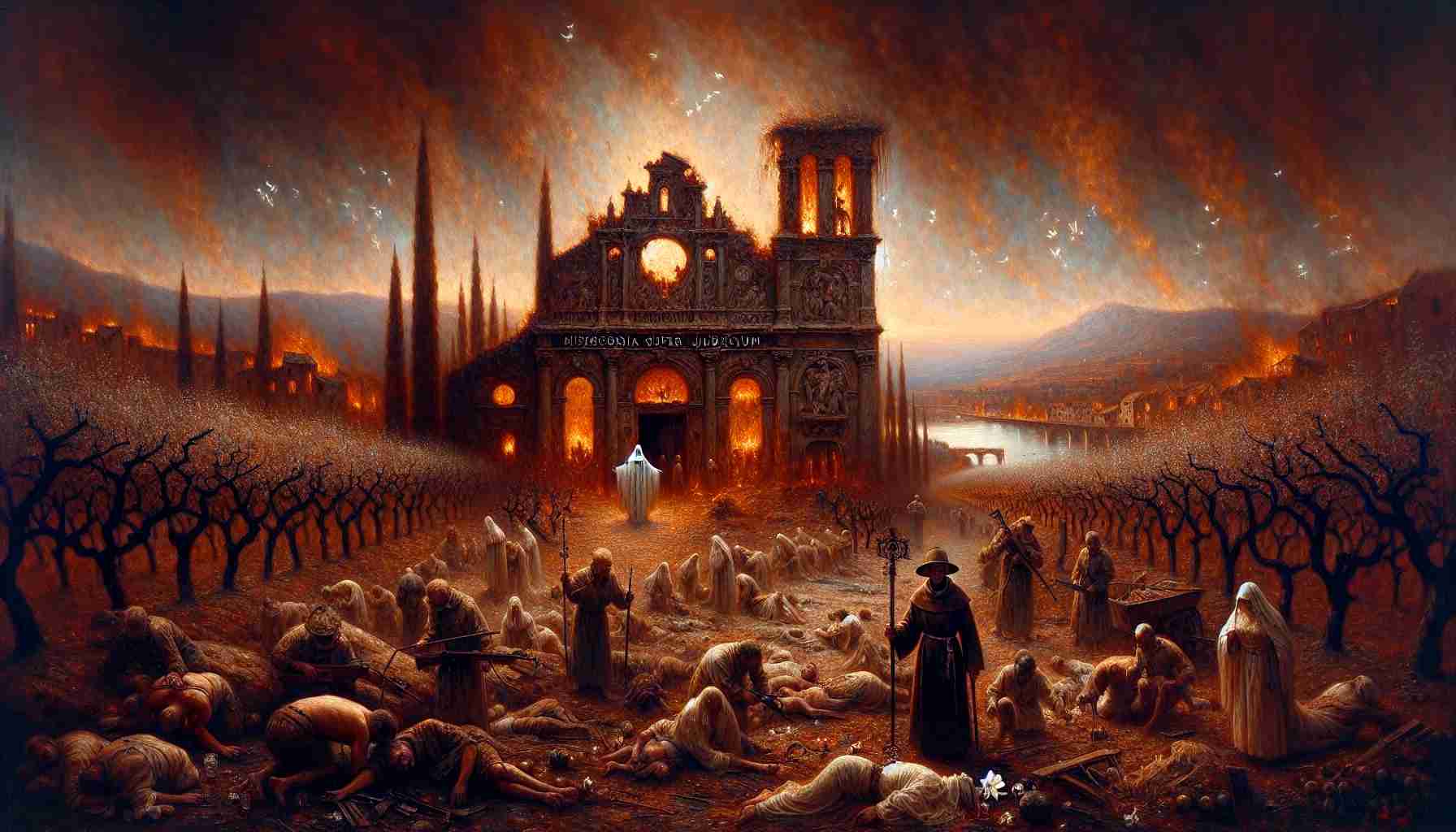

The air above Béziers trembled beneath the late July sun, shimmering over the red-tiled roofs and limestone walls of the proud Provençal city. From atop the bell tower of the Church of St. Mary Magdalene, one could once hear the chants of vespers tracing ancient stone vaults. But on July 22, 1209, those sacred sounds were replaced by the clash of swords, the pounding of boots, and the screams of the dying.
The narrow alleys had stood since Roman times, weathered old stones that bore the markings of empires. In this city were artisans and traders, noblemen and nuns, Franciscans preaching peace beside Cathar Perfecti who walked barefoot and abstained from meat and wealth, seeking God in purity. They disagreed on doctrine, yes—whether the world was created by a benevolent God or a corrupt demiurge, whether Christ had suffered in flesh or illusion. Yet they had lived side by side for decades, a fragile harmony held not by might, but by mercy.
That mercy shattered when the papal legate arrived under the banner of the cross, bearing Innocent III’s decree of holy war. To the crusaders from the north—Feudal lords lusting for land swallowed by zeal—Béziers was a nest of heresy. The pope had offered indulgences, and the sword became their gospel.
Their siege had barely begun when discipline failed. A band of crusaders, reckless and drunken on fervor, found the city gates ajar during a skirmish with the defenders. An open gate became a floodgate.
Against all orders, they stormed in.
From the ramparts, Viscount Raymond Roger's men could only watch as the tide rushed through the city, trampling any resistance. Somewhere near the cathedral, the Abbot of Cîteaux, Arnaud Amalric, had been approached with a desperate question:
"How do we separate the faithful Catholics from the heretical Cathars?"
Witnesses report that he answered, “Kill them all. God will know His own.”
What followed turned stone streets into rivers of blood. Neither age nor innocence protected anyone. Old priests clutching rosaries were struck down beside midwives and stonemasons. Children were thrown into fires lit in their own chapels. Catholic brothers died beside Cathar sisters, their cries indistinguishable in the flames.
More than seven thousand found their end in the very Church of Mary Magdalene where they had sought refuge as the chancel glowed red with reflected firelight—sacred arches transformed to tombs. The vaulted ceiling, built to glorify God, muffled the dying.
When it ended, the crusaders sang the Te Deum—"We praise thee, O God"—as the acrid smoke of holy vengeance curled into heaven.
Outside the city, ash drifted upon the hills like an unnatural snow. A few monks from Fontfroide Abbey, arriving too late to restrain the slaughter, wept among the ruins. One, Brother Lucien, sat beside a crumbled gate, rubbing soot from a scorched icon bearing the words of Jesus: Blessed are the merciful, for they shall obtain mercy (Matthew 5:7).
He traced the letters with trembling fingers.
There had been no mercy here.
Not for the heretic.
Not for the faithful.
Not for the soul of the Church, which now bore a stain deeper than blood.
In years to come, survivors whispered of ghosts wandering the Place de la Madeleine, where lilies now bloom. Some spoke of visions—phantoms in white robes weeping among the charred ruins, barefoot as the Perfecti once were. Others recalled dreams of Magdalene herself risen in the church’s dome, arms outstretched not in blessing, but mourning.
Historians would later debate the numbers, the motives, the veracity of every claim. Was Arnaud Amalric’s quote exaggerated? Did the crusaders truly believe they served Christ? Was the fire an accident or divine judgment?
Stone remembers nothing.
But carved into the lintel of the Church of Mary Magdalene—later rebuilt from those scorched remains—is a Latin inscription: Misericordia super judicium—mercy triumphs over judgment.
A prayer.
A plea.
Or perhaps, a warning.
Faith, when stripped of love, becomes a blade too easily drawn. In Béziers, that blade carved more than bodies—it carved a wound in the heart of Christendom, still felt for centuries.
And yet from ash, lilies grow.